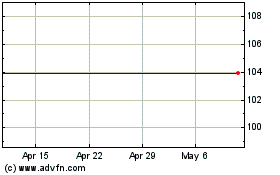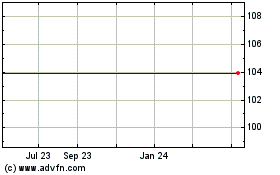Citrix today announced findings from a recent global survey that
examined how consumer-focused communications devices are being
increasingly adopted in the workplace. The data reveals that small-
and medium-sized businesses (SMBs) are coming under growing
pressure to enable their employees to use their personal
smartphones, tablets and other devices for business use. Some 25
percent of companies are already supporting the use of such devices
in the workplace, and many are benefitting from a significant
increase of 30 percent in productivity, as their employees are able
to work anywhere, anytime from any device. However, 62 percent of
businesses surveyed have no controls in place to manage these
devices, and 45 percent of IT managers are unaware of all the
devices being used, raising questions regarding security and
privacy.
“The nature of work continues to change,” said Brett Caine, SVP
and GM, Citrix. “The survey shows that employees are using new
consumer devices in the workplace for both business and personal
use. Organizations need to respond to this trend by developing
policies to address new mobile work styles that can drive
productivity through more flexible working, while safeguarding the
use of data and sensitive information.”
The Citrix survey was undertaken to understand the global use
and management of personal communications devices in the workplace
to support the growing demands for workforce flexibility. Conducted
by YouGov and Research Now between May 2011 and August 2011, the
survey polled more than 1100 senior executives and IT managers
across Australia, France, Germany, United Kingdom, and the United
States.
Results Summary
Over the past few years, businesses globally have come under
significant commercial, regulatory and environmental pressure to
enable greater workforce mobility. With this demand, 57 percent of
IT managers are most concerned over the security implications of
employees using personal devices for business. However, as
indicated by the survey, more than half of business executives and
IT managers are unaware of all personal devices used for business
purposes, and lack an employee personal device policy.
Although many businesses lack a policy for managing employee’s
personal devices for work, 38 percent of businesses globally do
have a process or tool to manage and account for consumer devices.
These organizations are encouraging flexible work and a personal
device policy supported by the adoption of online support and
monitoring tools that include the highest levels of security.
Businesses that are quick to adapt to these changes are
experiencing significant improvements in productivity when personal
devices are also used for business purposes. Productivity has
increased up to 20 percent for many organizations with a further 17
percent confirming even greater gains.
In response to the use of personal devices for work, a number of
technology solutions are enabling businesses to take advantage of
the benefits of workforce mobility, at the same time ensuring
network security. For example, Citrix has extended its range of
“GoTo” solutions to enable remote device monitoring and management,
remote access, easy collaboration, secure file storage, transfer
and sharing, and remote IT support via a range of consumer devices
including the iPad, iPhone, as well as Android devices.
Additionally, the full Citrix product portfolio, including
XenDesktop, Receiver and VDI-in-a-Box, gives IT the power to say
yes to personal devices and to deliver a mix of applications and
data to them, without compromising security, manageability or user
experience.
“It is no longer building for PC versus Mac,” said Caine. “It is
designing for the ubiquitous device changing the nature of work to
anywhere, anytime.”
Increasing Pressures for Flexible Work Practices Calls for
New Thinking about IT
In addition to the proliferation of personal devices used for
work, businesses are also feeling pressure to adopt more flexible
work practices that promote better work-life balance for
employees. According to this Citrix survey, 35 percent of the
participants say they are under greater pressure than five years
ago to offer more flexibility for employees.
As more companies adopt the practice of allowing the use of
personal devices and embrace more flexible working schedules, an
opportunity arises for IT to change the way they work. This
includes adopting new services to proactively monitor, manage and
support the increasing mobile workforce, ensuring business
continuity and minimal lost productivity of people working away
from the office. IT managers also need to be able to work more
efficiently, supporting people and machines from anywhere.
“The growth of mobile devices, bridging both personal and work
use, represents new opportunities for IT support. The edge of the
company network is extended while software ubiquity and complexity
rapidly increases,” said Elizabeth Cholawsky, VP and GM of IT
Services, Citrix. “Enabling support, monitoring and managing remote
and mobile workers is now a de facto requirement for IT to ensure
highly productive and effective businesses.”
Survey Top Findings: Global
- The dividing line between business and
personal devices for work use has become increasingly blurred; less
than half of IT managers, 45 percent, are unaware of all the
personal devices being used by their staff for business
purposes.
- Businesses are seeing productivity
gains of up to 36 percent from employees using both personal and
business devices.
- Bring Your Own (BYO) is becoming an
accepted business practice for both SMB and enterprise with 25
percent supporting use of personal devices for business
purposes.
- Some 35 percent of participants say
they are under greater pressure to adopt workforce flexibility
practices, including flexibility in the devices used and places
employees work.
- Security still ranks #1 as an adoption
barrier of allowing remote work for 57 percent of
participants.
- Surprisingly, 62 percent of
participants have no process or tool to manage and account for the
way consumer devices are being used with company data and services.
The remaining 38 percent have processes and policies in place to
manage and support personal devices, mitigating the risk of
compromising their business.
Regional breakdownAustralia
- More than 63 percent of participants
have no policies, procedures or IT systems in place to manage the
use of personal devices for business purposes.
- Less than half of ANZ firms (47
percent) are aware of all the devices their staff is using for
business purposes. This is well ahead of the European average of
just 43 percent.
- 50 percent of businesses have recorded
productivity improvements of more than 10 percent. Nineteen percent
of businesses confirm productivity gains of more than 30
percent.
- 32 percent of firms are most concerned
over the security implications of allowing application and document
downloads, and 24 percent are concerned over remote access to the
corporate network.
Germany
- 59 percent of participants are not
aware of all the personal devices being used by staff on behalf of
the business.
- In 56 percent of German firms,
employees already use their own devices for business purposes.
- SMEs are most concerned over the
security implications of allowing remote access to the corporate
network (34 percent) and application and document downloads (29
percent).
- However, by integrating business and
personal use effectively, more than two in five businesses have
recorded productivity improvements of up to 20 percent with a
further 17 percent confirming even greater gains.
France
- 74 percent of all firms have no
policies, procedures or IT systems in place to manage the use of
personal devices for business purposes.
- At the same time, only 32 percent are
aware of all the devices their staff are using for business
purposes – significantly below the European average of 43
percent.
- In 61 percent of French firms,
employees already use their own devices for business purposes.
- More than 2 in 5 businesses (42
percent) have recorded productivity improvements of up to 20
percent, with a further 20 percent confirming even greater
gains.
United Kingdom
- 57 percent have no policies, procedures
or IT systems in place to manage the use of personal devices for
business purposes.
- Only half of UK firms (54 percent) are
aware of all the devices their staff are using for business
purposes - yet even this is well ahead of the European average of
43 percent.
- In 45 percent of firms surveyed,
employees already use their own devices for business purposes.
- 33 percent of businesses have recorded
productivity improvements of more than 10 percent, with 11 percent
confirming gains of more than 30 percent.
- 32 percent of firms are most concerned
over the security implications of allowing application and document
downloads and 29 percent are concerned over remote access to the
corporate network.
U.S.
- More than 67 percent have no policies,
procedures or IT systems in place to manage the use of personal
devices for business purposes.
- Less than half of U.S. firms (46
percent) are aware of all the devices their staff are using for
business purposes - yet even this is well ahead of the European
average of just 43 percent.
- 53 percent of businesses have recorded
productivity improvements of more than 10 percent, with 16 percent
confirming gains of more than 30 percent.
- 32 percent of firms are most concerned
over the security implications of allowing application and document
downloads, and 23 percent are concerned over remote access to the
corporate network.
About Citrix Systems, Inc.
Citrix Systems, Inc. (NASDAQ:CTXS) is a leading provider of
virtual computing solutions that help people work and play from
anywhere on any device. More than 250,000 enterprises rely on
Citrix to create better ways for people, IT and business to work
through virtual meetings, desktops and datacenters. Citrix
virtualization, networking and cloud solutions deliver over 100
million corporate desktops and touch approximately 75 percent of
Internet users each day. Citrix partners with over 10,000 companies
in 100 countries. Annual revenue in 2010 was $1.87 billion. Learn
more at www.citrix.com.
The Online Services Division of Citrix provides secure,
easy-to-use cloud-based solutions that enable people to work from
anywhere with anyone. Whether using GoToMeeting® to hold online
meetings, GoToWebinar® to conduct larger web events, GoToTraining®
to train customers or employees, GoToMyPC®to access and work on a
remote Mac® or PC, GoToAssist® to support customers or GoToManage®
for IT support and management, businesses and individuals are
increasing productivity, decreasing travel costs and improving
sales, training and service on a global basis. For more
information, visit www.citrixonline.com.
Citrix®, GoToMeeting®, GoToWebinar®, GoToTraining® and HiDef
Corporate® are trademarks of Citrix Systems, Inc. and/or one or
more of its subsidiaries, and may be registered in the U.S. Patent
and Trademark Office and in other countries. All other trademarks
and registered trademarks are property of their respective
owners.
Citrix Systems (NASDAQ:CTXS)
Historical Stock Chart
From May 2024 to Jun 2024

Citrix Systems (NASDAQ:CTXS)
Historical Stock Chart
From Jun 2023 to Jun 2024
